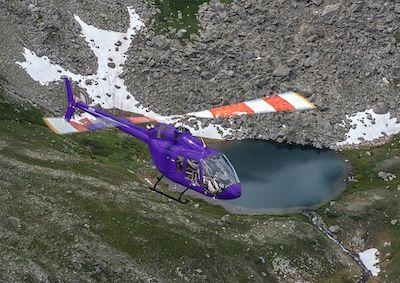Tue, Dec 03, 2019
Outlines Requirements For Crash-Resistant Fuel Systems, Seats And Other Structures
The FAA has published a tool kit for helicopter operators outlining requirements for crash-resistant systems and structures that go into effect in April, 2020.

The agency says that helicopters equipped with crash resistant fuel systems, crash resistant seats and structures provide the highest level of protection for pilots and passengers. A crash resistant fuel system increases the likelihood of surviving a helicopter crash due to a reduced threat of injuries from fire. Crash resistant seats and structures increase the probability of surviving the initial collision from an accident.
In the FAA Reauthorization Act of 2018, Section 317 prohibits helicopters manufactured after April 5, 2020, from flying in U.S. airspace unless certified with a crash resistant fuel system.
Crash resistant fuel systems increase safety for occupants by decreasing or delaying a post-crash fire. Systems that meet the FAA’s regulatory requirement minimize fuel leaks and lessen fuel ignition sources. Crash resistant fuel systems are required for all helicopter models that were certified after 1994. However, the requirement did not apply to newly built helicopters if the original design was certified before 1994. Most newly built helicopters continued to be those certified before 1994. As a result, nearly 25 years later, a low percentage of U.S. helicopters (about 15 percent) meet the regulatory requirement.
Similar to fuel systems, the design requirements for crash resistant seats and structures also improve survivability of a crash. They absorb a greater amount of the crash energy and they can prevent an occupant’s head from hitting the interior of the helicopter.
Due to the FAA regulatory requirement, all helicopter models certified after 1989 must have crash resistant seats and structures. However, if the original design was certified before 1989, the regulatory requirement does not apply. As a result, 30 years later, a low percentage of U.S. helicopters (about 10 percent) meet the regulatory requirement.
(Source: FAA. Image from file)
More News
Takeoff Roll The process whereby an aircraft is aligned with the runway centerline and the aircraft is moving with the intent to take off. For helicopters, this pertains to the act>[...]
“We’re proud of the hard work that went into receiving this validation, and it will be a welcome relief to our customers in the European Union. We couldn’t be mor>[...]
"Aircraft Spruce is pleased to announce the acquisition of the parts distribution operations of Wag-Aero. Wag-Aero was founded in the 1960’s by Dick and Bobbie Wagner in the >[...]
IDENT Feature The special feature in the Air Traffic Control Radar Beacon System (ATCRBS) equipment. It is used to immediately distinguish one displayed beacon target from other be>[...]
Aero Linx: Pararescue Air Force Pararescuemen, also known as PJs, are the only DoD elite combat forces specifically organized, trained, equipped, and postured to conduct full spect>[...]
 ANN's Daily Aero-Term (05.10.24): Takeoff Roll
ANN's Daily Aero-Term (05.10.24): Takeoff Roll Aero-News: Quote of the Day (05.10.24)
Aero-News: Quote of the Day (05.10.24) Aero-News: Quote of the Day (05.11.24)
Aero-News: Quote of the Day (05.11.24) ANN's Daily Aero-Term (05.11.24): IDENT Feature
ANN's Daily Aero-Term (05.11.24): IDENT Feature ANN's Daily Aero-Linx (05.11.24)
ANN's Daily Aero-Linx (05.11.24)



